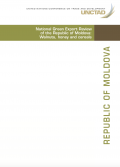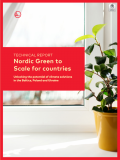
This report reviews the economic, regulatory, institutional and trade policy environments characterising the honey, cereal and walnut sectors, underlining their export and value-added potential in the Republic of Moldova, and provides a SWOT analysis and action plans to assist policymakers in realising this potential.

By 2050, nearly 10 billion people will live on the planet. Can we produce enough food sustainably? The synthesis report of the World Resources Report Creating a Sustainable Food Future shows that it is possible – but there is no silver bullet. This report offers a five-course menu of solutions to ensure we can feed everyone without increasing emissions, fueling deforestation or exacerbating poverty

This report, The development and use of biodiversity indicators in business: an overview , builds on a suite of work focused on providing guidelines and tools specifically for business, and it is intended to contribute to the ongoing dialogue on biodiversity indicators within Europe and beyond.

This paper reviews debates and practice around the conventional and alternative measures of economic well-being. Evaluating the major contending measures – the Genuine Progress Indicator, Human Development Index, Happiness/life evaluation index, Happy Planet Index, the OECD’s Better Life Initiative dashboard – the paper argues that the GPI is the only indicator that incorporates care for human beings and care for the environment in a single framework and is therefore best suited to guide policy in responding to the major challenges of our time – rising inequality, climate change, environmental destruction.

Nordic Green to Scale 2 analyses the potential of scaling up existing climate solutions in two regions: the Baltic countries, Poland and Ukraine in Europe; and Kenya and Ethiopia in East Africa. This report reflects the study results for the five European target countries (Estonia, Latvia, Lithuania, Poland and the Ukraine). Ten different solutions have been selected out of those included in the two previous studies as particularly promising for that region. The analysis covers emission reduction potential, costs and savings as well as cobenefits of scaling up the selected solutions.
